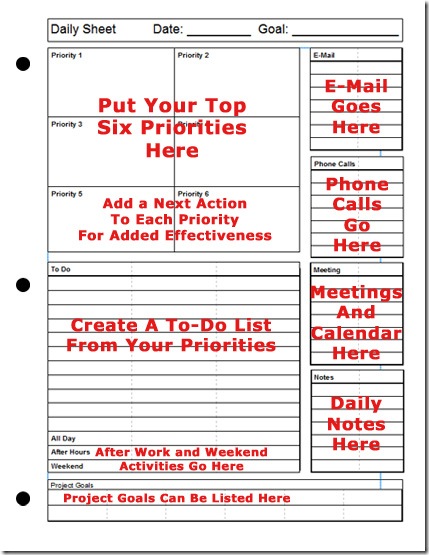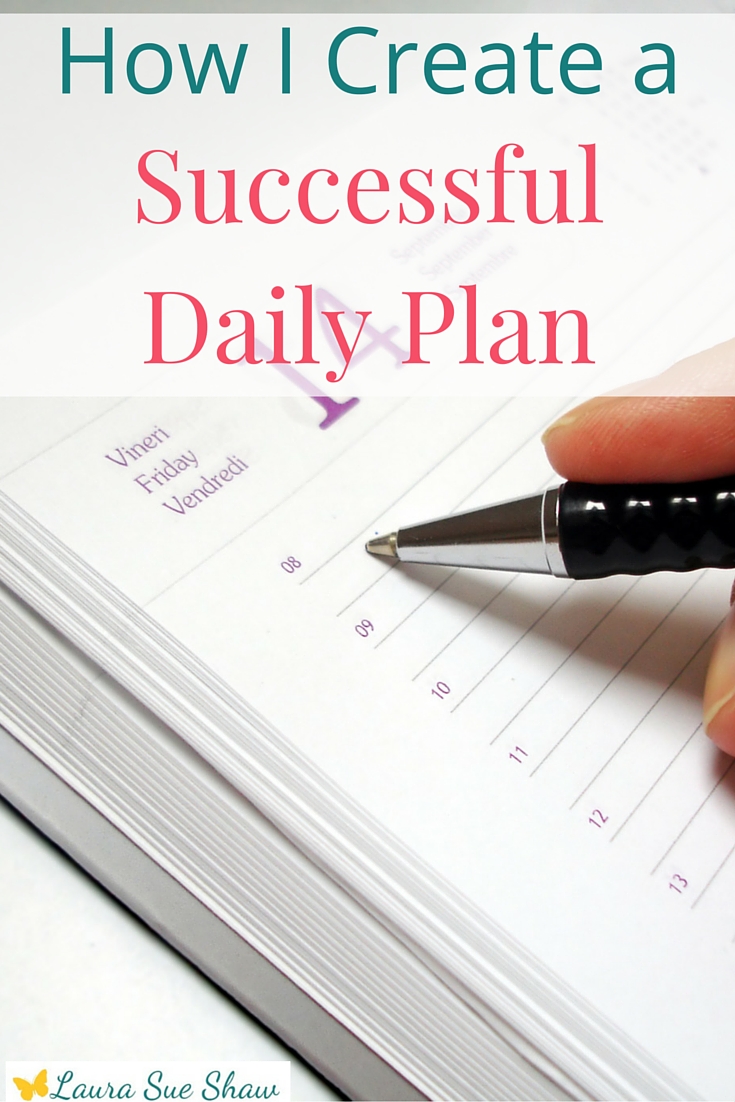Daily Planning for Success: Your Ultimate Guide to Boosting Productivity
Effective daily planning is one of the most crucial factors for achieving personal and professional success. Whether you’re an entrepreneur, student, or a busy professional, the way you structure your day can make or break your productivity. A solid daily plan helps you stay focused, organized, and energized, enabling you to achieve your goals while reducing stress.
In this article, we’ll delve into the importance of daily planning, the best strategies to organize your day, and how to avoid common pitfalls that can derail your progress. From simple tools and techniques to proven methods, you’ll learn everything you need to plan your day for success.

Why Daily Planning is Crucial for Success
Planning your day may seem like a small task, but it has a huge impact on your ability to achieve your goals. Here’s why daily planning is essential:
- Increased Productivity: By having a clear plan, you’ll know exactly what to focus on, reducing the time spent figuring out what to do next.
- Enhanced Focus: A structured schedule minimizes distractions, allowing you to concentrate fully on each task.
- Reduced Stress: Knowing what’s expected of you throughout the day reduces anxiety and helps you stay calm even when challenges arise.
- Greater Work-Life Balance: Effective planning ensures that you allocate time for both work and personal activities, preventing burnout.
- Achieving Long-Term Goals: Daily planning breaks larger goals into smaller, manageable tasks, helping you stay on track for success.
The Key Elements of Effective Daily Planning
1. Set Clear Priorities
The first step in planning your day is identifying your top priorities. Without a clear sense of priorities, it’s easy to get sidetracked by non-essential tasks. Begin each day by determining which tasks are the most important and focus on completing them first.
Tips for Prioritizing Tasks:
- Use the Eisenhower Matrix to categorize tasks into four quadrants: urgent and important, not urgent but important, urgent but not important, and neither urgent nor important.
- Consider using the ABC Method: Label tasks as A (most important), B (important), and C (least important) and work on them accordingly.
- Focus on tasks that move you closer to your long-term goals.
2. Time Blocking for Focused Work
Time blocking is a highly effective strategy for daily planning. It involves dedicating specific blocks of time to certain tasks or activities. This method helps you stay focused and prevents distractions.
How to Time Block:
- Break your day into chunks, assigning each chunk to a particular task. For example, you might reserve the first hour for writing, the next two hours for meetings, and so on.
- Set realistic time frames for each task to prevent overloading your schedule.
- Schedule breaks to avoid burnout. A well-rested mind is far more productive than a fatigued one.

3. Include Time for Personal Development
In addition to work-related tasks, it’s essential to allocate time for personal growth and development. Whether it’s reading, exercising, or learning a new skill, personal development is key to long-term success.
Examples of Personal Development Activities:
- Reading: Dedicate at least 20-30 minutes daily to reading books, articles, or research papers that contribute to your personal and professional knowledge.
- Exercise: Incorporating physical activity into your day can boost energy, improve mental clarity, and reduce stress.
- Reflection: Take time each day to reflect on your goals and progress, making necessary adjustments to stay on track.
4. Use a Planner or Digital Tools
There’s no shortage of tools available to help you organize your day. Whether you prefer a traditional planner or a digital solution, find what works best for you.
Popular Planning Tools:
- Google Calendar: Ideal for time-blocking and scheduling tasks.
- Todoist: A simple, yet powerful task management app for organizing your to-do list.
- Notion: A versatile platform for managing projects, tasks, and personal goals.
- Physical Planners: For those who prefer writing things down, a daily or weekly planner is a great option to keep things organized.
5. Review and Adjust Your Plan
Daily planning doesn’t end with simply creating a to-do list. It’s important to review your plan periodically throughout the day to assess your progress. If something unexpected arises, be flexible and adjust your plan as needed.
How to Review and Adjust:
- At the start of your day, review your plan and ensure that you’re on track.
- During your breaks, quickly assess whether you’re sticking to your time blocks or need to reallocate time for certain tasks.
- At the end of the day, take 5-10 minutes to reflect on what worked and what didn’t, and adjust your plan for tomorrow.
6. Set Realistic Expectations
Overloading your schedule can lead to stress and burnout. It’s essential to set realistic goals and understand your limits. Be mindful of the time it takes to complete tasks and leave room for the unexpected.
Tips for Setting Realistic Expectations:
- Estimate how long tasks will take and allow for a buffer.
- Avoid overloading your day with too many tasks, as this can lead to frustration.
- Set achievable goals that motivate you to accomplish more, rather than overwhelm you.
Overcoming Common Obstacles in Daily Planning
Even with the best planning, there will always be challenges that arise. The key is to remain adaptable and continue working toward your goals despite obstacles.
1. Procrastination
Procrastination is one of the most common barriers to productivity. The key to overcoming procrastination is to break large tasks into smaller, more manageable steps.
- Tip: Use the Pomodoro Technique to break work into 25-minute intervals followed by short breaks. This helps overcome the inertia of starting a task.
2. Distractions
Distractions, whether from colleagues, family members, or social media, can severely impact your productivity. Use tools like website blockers or time tracking apps to limit distractions during work hours.
- Tip: Turn off non-essential notifications and set designated times for checking emails or social media.
3. Burnout
Daily planning is about balance—filling your schedule with productive tasks, but also allowing time for relaxation. Overworking can lead to burnout, so it’s crucial to include downtime in your daily plan.
- Tip: Schedule rest periods or engage in activities that relax and rejuvenate you, such as meditation, yoga, or spending time with loved ones.
Example of a Daily Plan for Success
To give you an idea of how a successful day might look, here’s an example:
- 6:00 AM – 7:00 AM: Morning routine (exercise, meditation, breakfast)
- 7:00 AM – 8:00 AM: Review and plan the day
- 8:00 AM – 10:00 AM: Focused work session (write a blog post, complete an important project)
- 10:00 AM – 10:30 AM: Break (walk, stretch)
- 10:30 AM – 12:30 PM: Continue work on project or attend meetings
- 12:30 PM – 1:30 PM: Lunch break
- 1:30 PM – 3:30 PM: Respond to emails, make phone calls, or complete administrative tasks
- 3:30 PM – 4:00 PM: Short break
- 4:00 PM – 5:30 PM: Work on a personal development task (reading, learning a new skill)
- 5:30 PM – 6:00 PM: Wrap up, review progress, and plan for the next day
- 6:00 PM – 10:00 PM: Family time, relaxation, and evening routine

Conclusion: Make Daily Planning a Habit
Mastering daily planning is the key to unlocking your potential and achieving long-term success. It requires consistency, discipline, and a willingness to adapt as needed. By using strategies like time blocking, prioritizing your tasks, and reflecting on your progress, you’ll be on the path to becoming more organized, productive, and successful.
Remember, planning is not just about filling your day with tasks, but about creating a strategy that aligns with your long-term vision and values. Start small, make daily planning a habit, and watch as it transforms your productivity and success.
FAQs
Q1: How can I start daily planning if I’ve never done it before?
A1: Begin by setting aside 10-15 minutes each evening to plan for the next day. Write down your top three priorities and time-block your day based on those tasks.
Q2: What tools do you recommend for daily planning?
A2: For digital planners, Google Calendar, Todoist, and Notion are excellent choices. If you prefer paper planners, the Daily Planner by Clever Fox is a great option to keep everything organized.
Q3: How can I avoid burnout while planning my day?
A3: Make sure to schedule regular breaks, and allocate time for self-care and relaxation. Overworking yourself can reduce productivity in
the long run.
For more on time management and daily planning, visit Time Management Tips.

